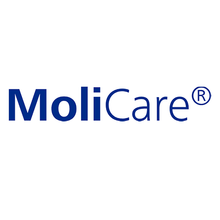BLADDER LEAKS: SOME GOOD NEWS
The truth is, leaks won't get better on their own. But the good news is, there are a number of relatively easy things you can do to treat or manage the condition and even train your bladder. See our Incontinence treatment guide to explore the many other ways you can improve your bladder control.
You'll experience fewer leaks and sudden urges throughout the day if you visit the bathroom regularly to empty your bladder, even when you don't "have" to go. You can also try slowly increasing the amount of time between urination. Put yourself on a schedule to keep track of your urges and the amount of urine expelled – this will also make any deviations more obvious. However, you should keep in mind that going too often can cause the bladder to shrink, limiting its ability to hold enough urine.
KEEP A BATHROOM DIARY
A Bathroom Diary, like the one below, is a great tool for tracking your bathroom habits and episodes of leakage. For every leak, record the amount of urine or feces lost – S for a small amount, M for a medium amount, or L for a large amount. You can also keep track of those scheduled visits while you're retraining your bladder. Your Bathroom Diary will also be extremely helpful to your healthcare provider. They'll be able to see your pattern of leakage clearly, which helps them better assess your symptoms and determine the best course of treatment. You can also include a list of your current medications which might be interfering with your bladder control.
ADDITIONAL INCONTINENCE TREATMENT OPTIONS
Once your symptoms and incontinence type have been assessed, your healthcare provider may want to complement your bladder retraining with other treatment options, such as pelvic floor exercises and changes in your diet, medication, or surgery.
STAYING CLEAN WITH PROTECTIVE HYGIENE
As you work to improve your bladder control, you can use protective hygiene to help manage moisture, odor, and freshness whenever leaks happen. Prevail® protective hygiene products are one of the easiest ways to stay clean without disrupting your life. Check out our guide to the Types of Incontinence to determine which protective hygiene product is best for you, based on the types of leaks you're experiencing.
THE FIRST STEP: TALK TO YOUR HEALTHCARE PROVIDER
It's always a good idea to begin any self-assessment or course of treatment with a visit to your healthcare provider. Nervous about opening up to your doctor? It might help to know that 25 million Americans experience leakage every single year. So, you're not alone – and your healthcare provider has heard it all before. Your physician can be a trustworthy and supportive partner in your quest for the right treatment. They're there to help.
If you still have questions or concerns, our Prevail® eNurse™ support team is available around-the-clock to help you get control of leakage. Start a chat or give one of our nurses a call at 866-573-3776.







